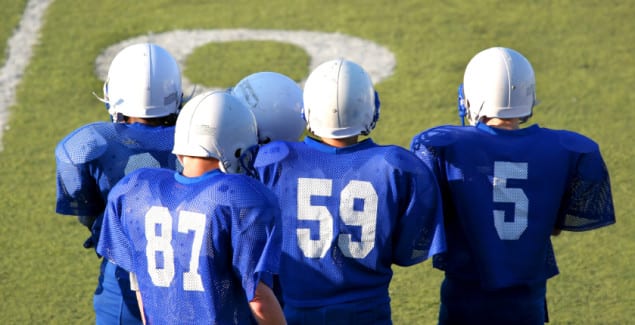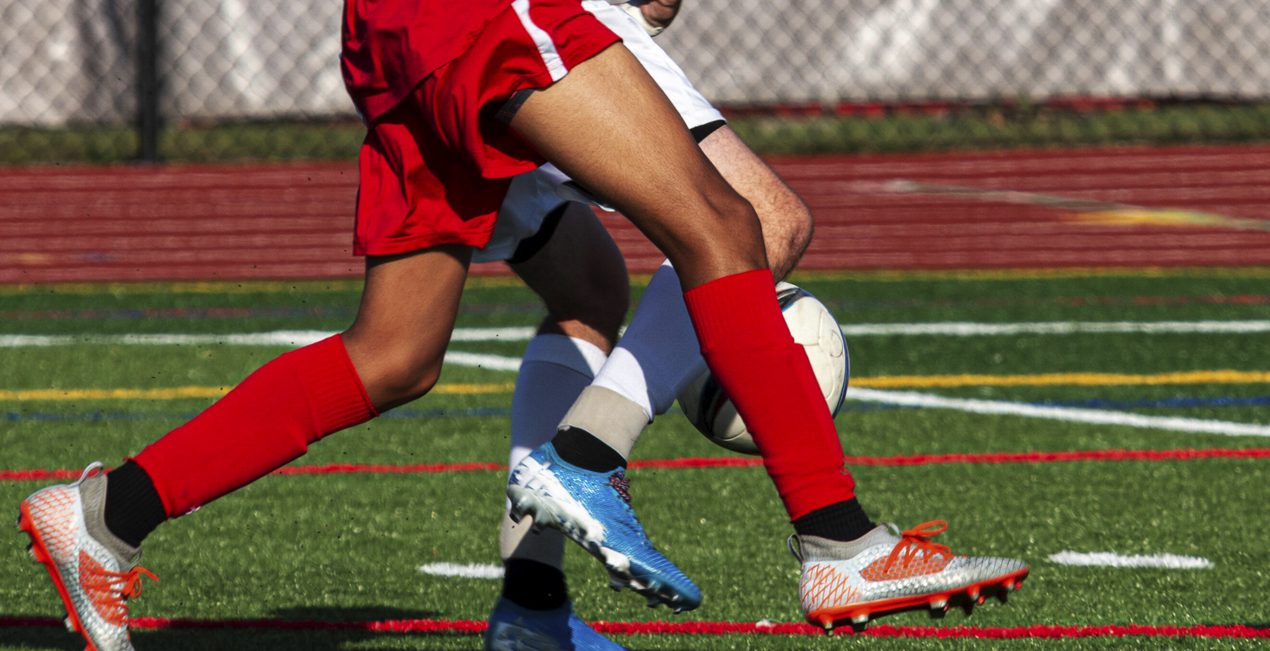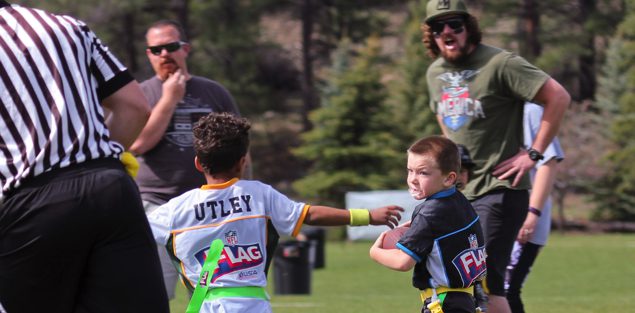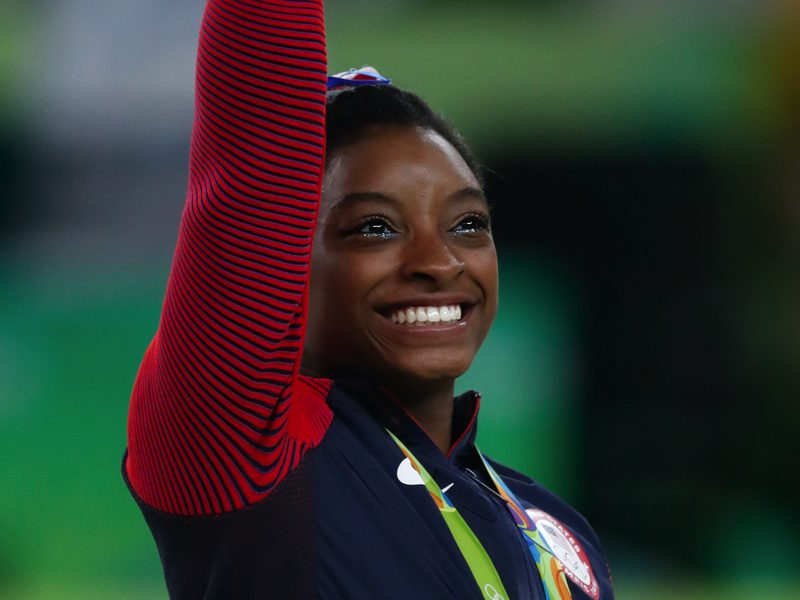Contact Sports: Yes Or No?

Posted in: Hot Topics, Podcast, Teenagers
Topics: Child + Adolescent Development
There’s no doubt about the recommendations. Most experts in neurodevelopment suggest that kids stay away from American contact sports, like tackle football, until they are at least 14 years old.
You can also tune in this conversation wherever you get your podcasts – just search for “Shrinking It Down.”
What’s so magic about 14? We’ll get to that in a minute, but first, let’s frame the debate by putting it into a larger context. As we learn more and more about the rapidly-developing brains of childhood and adolescence, we become increasingly skittish about what we’re willing to subject those brains to in the name of sports and athletics.
The Controversy
This is certainly highly controversial. Many of us have fond memories of high school football, lacrosse, or hockey, and, depending on where in the U.S. you were born, you might even have something approaching reverence for these sports. That’s why there was a tiny but vociferous outcry when the American Academy of Pediatrics (AAP) officially recommended that its members suggest that kids no longer participate in Golden Gloves Boxing until at least adolescence. There aren’t many regions of the nation that have strong boxing programs, but the ones that do were, well, ready to throw a punch with that announcement.
But that’s just the tip of the iceberg. It’s easy to imagine that the AAP was setting the stage for a more sweeping commentary on all contact sports. Forty years ago, most neurodevelopmental specialists thought that brain development was slow and plodding. Now, we are aware that the developing brain changes rapidly and logorhythmically. That means that so many changes happen so quickly and so precisely in developing brains, that any injury—a concussion, for example—can significantly derail neuro-development. This is one of reasons that kids who have a single concussion are many times more likely to suffer multiple concussions. These risks seem to lessen with the onset of adolescence, but, as with professional athletes, the risks persist.
Here’s where the debate gets heated. I was actually discussing this with my old football coach, and he was incredulous. “Of course there are more concussions in college and the pros,” he said. “It’s physics! Force equals mass times accelerations. Little kids can’t run, and they don’t weigh anything. How much damage can they do?” Well, a lot, it turns out.
The Science
Researchers at Virginia Tech studied Pop Warner football players using instrumented helmets, and they found that these pre-adolescent kids were enduring hits with the same force as their teenage and adult counterparts. That finding, of course, begs a larger question: why would any age be OK for a civilized society to permit something like football? Won’t those little kids just get bigger? Won’t they just do more damage?
Yes, it’s true that the potential for more potent hits during contact sports exists among bigger kids, but as kids grow, the risks of concussion fall. And, it turns out, this isn’t related to the state of the kids’ brains—it’s instead related to the muscles in their necks. To make sense of this, let’s start by formally defining what a concussion actually is.
Think of your skull as a protective container packed with bubble wrap. The container is meant to hold the contents in place, and the bubble wrap is meant to stop the contents from getting damaged as they bang against the walls of the container. In the case of your brain, your skull provides the external and powerful protection, but that same property that makes the skull perfect for protecting the brain—the fact that the skull is hard and bony—also causes problems when your head gets knocked around. That’s because your brain sloshes about inside your skull, sort of banging up against one side or the other. So, the brain uses its own bubble wrap—in this case, the fluid in the skull—to cushion the brain inside its hard casing.
But, we all know what happens to our packages, even when they’re packed with bubble wrap, if we drop them too often. If the delivery guy throws the package onto your doorstep, that bubble wrap can only do so much. The contents of that package get damaged if they are thrown inside their box with enough force to overcome the resistance of the bubble wrap.
Now, picture two kids’ heads. These heads bash into each other in, say, a Pop Warner football game. If the force is great enough, the fluid in the skull—the bubble wrap—isn’t enough. The brain sloshes back and forth inside the skull, and the delicate neurons and connections take a beating. A concussion is defined as anytime this kind of contact leads to an altered state of consciousness, no matter how long. You don’t have to lose consciousness to have a concussion. But, you do have to feel a bit shaken up—we used to call it “having your bell rung.” There are, of course, major and minor concussions, but remember that once your brain has taken a significant beating, it is much more likely to suffer a similar beating with further contact.
I still remember a hard hit in junior high football where I got up, stared at the blurry and confused world, and then made my way to the sidelines …the other team’s sidelines. “Son, you got your bell rung,” the opposing coach laughed, and he helped to re-orient me with my own team. A play later, I was back in the game.
This happened to me when I was 12 years old, and today, most experts would recommend that I sit out the rest of the game, even be examined by a physician. But, experts are divided on what to do if this were to have happened later in my football career (as it certainly did). What if I took the same hit at age 16? Why is that different?
That brings us back to the magic age 14 as a cut-off. Contrary to what most people think, 14 isn’t set aside for any major reason other than the fact that it’s the age where most boys have at least begun puberty. This is the recommendation of Dr. Cantu and Mark Hyman in their book, Concussions and Our Kids: America’s Leading Expert on How to Protect Young Athletes and Keep Sports Safe. In fact, the authors even suggest ignoring the age, and looking instead for signs of puberty in the child. That’s because puberty correlates strongly with having a stronger neck, and the stronger the neck, the less sloshing around your brain does when you take a hard hit from contact sports. The neck absorbs the blow, and the brain stays steadier; the end result is protection against concussion. Think of this in evolutionary terms: we’re born with huge heads relative to other species—that’s because of our huge brains. However, our bodies tend to catch up to those heads around the onset of biological adolescence. Hence, 14 is the arbitrary cut-off, but it is based on the fact that most 14-year-old bodies can handle the brain that sits on top of them.
What To Do About Contact Sports?
All of this brings us back to the initial controversy about contact sports. What do you do if your child “gets her bell rung” in soccer or takes “a hard hit” to the head in football?
Here’s what the CDC has advised: it’s better to miss a game than a whole season. That is, in fact, the key message of a campaign by the CDC aimed at sports-related concussions. The CDC notes that the short-term effects of a concussion can generate additional problems that may plague a person throughout life. When young athletes have a flawed memory, they can have difficulty concentrating in school, relating to other kids, or sleeping well, and these problems therefore have long-term, devastating consequences.
Right now, as we wander through the gray zone of unclear official recommendations, the biggest danger occurs when athletes go back to the game before they fully recover from a concussion. In such a case, even a mild blow can cause second-impact syndrome, which can lead to brain swelling, brain damage, and even death. This is, of course, quite rare—high school football players aren’t dying in droves.
But why take the risk?
Teammates need to keep an eye on each other. Athletes must let everyone know if they hurt their heads. Parents should make sure that children wear the right safety gear during all practices and games, and, given the ongoing controversy, it sometimes is up to the parents to get their kids out of the game. This is, of course, awkward for parents and kids, but a long-lasting brain injury is substantially worse.
Bench your child until a health care professional who knows the return-to-play guidelines says it’s OK to play contact sports. As with all parenting, your first job is to keep your child safe.
For more information about concussions, visit the CDC at http://www.cdc.gov/TraumaticBrainInjury

 Share
Share Tweet
Tweet





